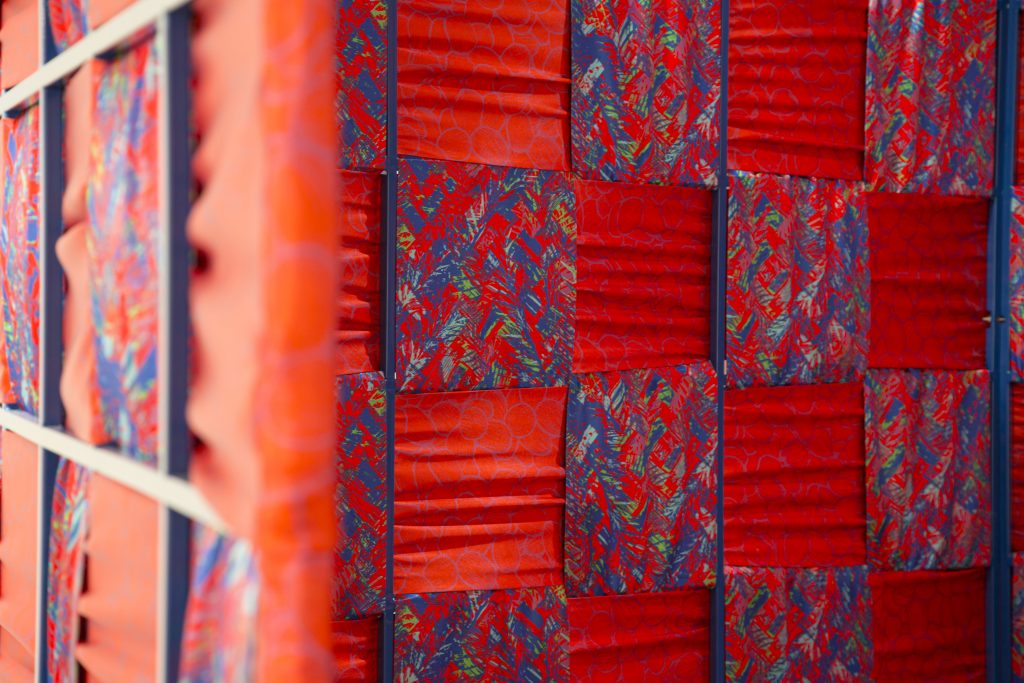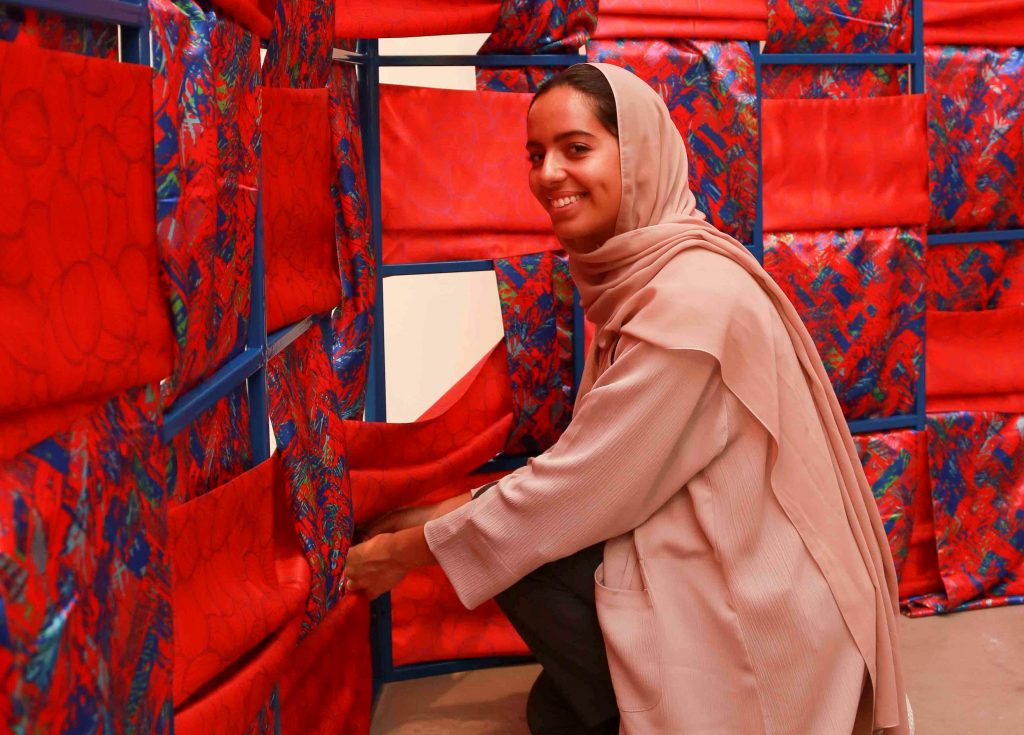



Shams El -Mutwalli Dubai
Emirati designer Hessa Al Suwaidi mostly works with printed textiles. Her most recent installation, Um Rashed, was presented at the Fashcultivate exhibit in the UAE last year.
Fashcultivate was an exhibit that brought together seven designers commissioned to explore and research palm trees and ultimately create a final piece that reflects on the trees’ functions, colours, and structures. The artists’ work was displayed at the 1971 Design Space Sharjah from November 2019 to February 2020.
Al Suwaidi’s installation intended to show the three important factors of the palm tree: Shelter, food, and beauty. It was created using a metal grid woven with printed textiles—the print was made using digitally manipulated images of palm trees.
Al Suwaidi’s installation was also inspired by Japanese artist, Yayoi Kusama.
“My favourite artist is Yayoi Kusama. I mostly get inspired by her work especially the installations she creates that sets the viewer on a whole journey. She was my inspiration for Um Rashed, I wanted to create an experience that consumes the viewer and is surrounded by all these prints” she told Arab News Japan.
Al Suwaidi acknowledges the parallels between the abaya and the kimono as traditional, cultural garments.
She believes “there are some similarities in the way they fit and look on the body but also the abaya holds a significant value like the kimono, being a traditional symbol with cultural value. The difference is that the abaya can be worn daily as casual clothing while the kimono is very sacred and is worn on special occasions.”
The Emirati designer has expressed interest in possibly using the kimono as a source of inspiration and “maybe doing evening wear abayas that could be worn on special occasions” she told Arab News Japan.
As of now, Al Suwaidi just launched her first collection: Chaotic Theory under her brand PRNTCODE.
Chaotic Theory is a collection launched in collaboration with Hamzat Wasl Studio, a Dubai-based design agency, and is based on “the random forms of light that create underlying patterns and movements” Al Suwaidi said.
Pieces range from slip dresses to slip skirts in colourful prints priced between $250 to $550.
“My pieces always turn out to be hybrids between being drawn then manipulated on the computer, then drawn on top of it again then printed on fabric” she said.
Every design process differs for Al Suwaidi depending on her source of inspiration, she said.